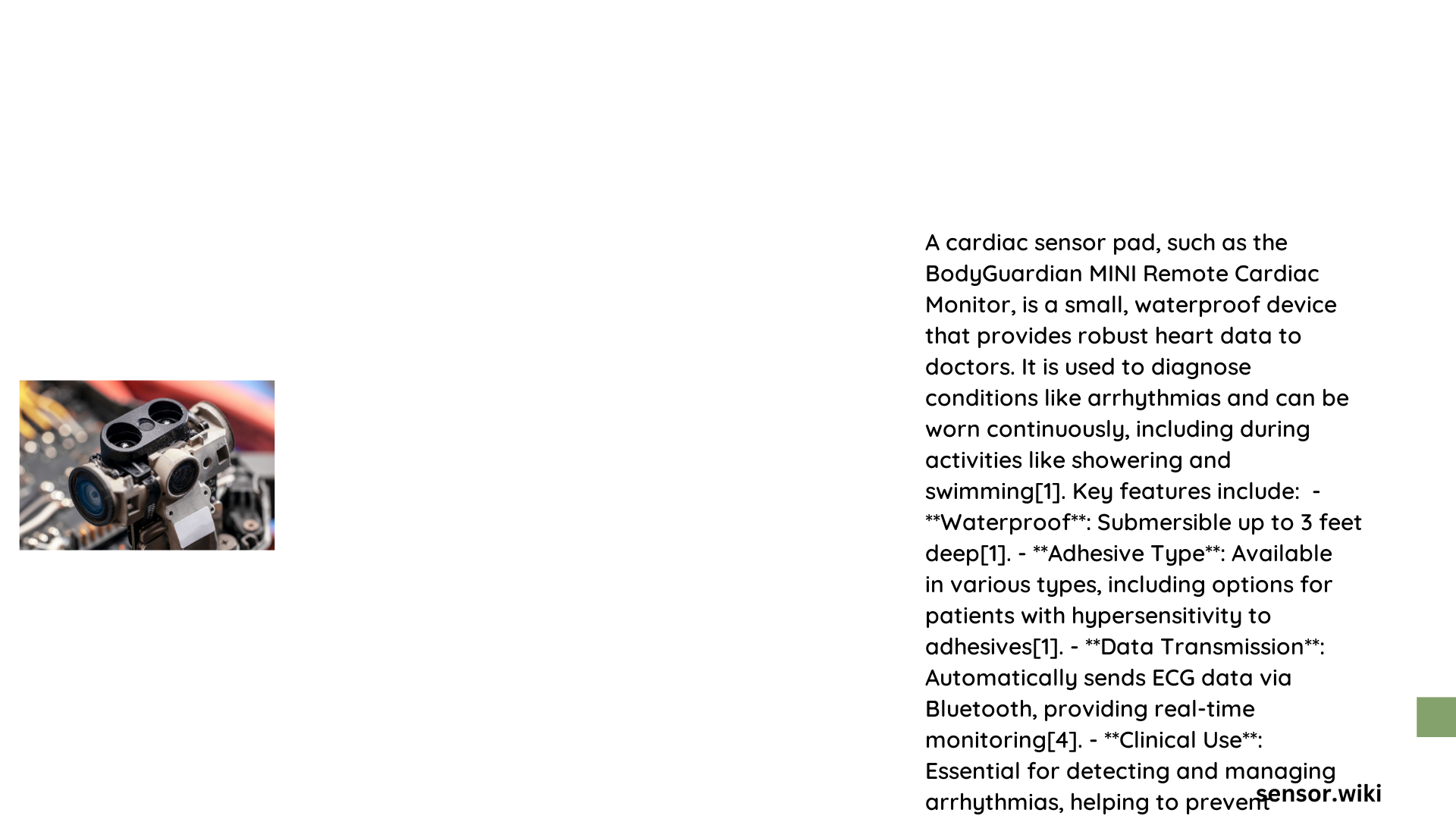Cardiac sensor pads represent a critical technological innovation in medical diagnostics, enabling precise heart electrical activity monitoring through advanced electrode systems. These sophisticated devices provide healthcare professionals and emergency responders with real-time cardiac data, facilitating rapid assessment and potentially life-saving interventions for patients experiencing cardiac emergencies.
What Are Cardiac Sensor Pads?
Cardiac sensor pads are specialized medical electrodes designed to detect and transmit electrical signals from the human heart. These sophisticated devices serve multiple critical functions in medical diagnostics and emergency response scenarios.
Key Components of Cardiac Sensor Pads
| Component | Function | Specification |
|---|---|---|
| Conductive Gel | Signal Transmission | High electrical conductivity |
| Adhesive Layer | Skin Attachment | Hypoallergenic, secure grip |
| Electrical Contacts | Signal Reception | Low resistance |
How Do Cardiac Sensor Pads Work?

Cardiac sensor pads operate through several sophisticated mechanisms:
- Signal Detection
- Capture minute electrical impulses from heart muscle
- Convert electrical signals into measurable data
-
Transmit information to monitoring devices
-
Skin Interface
- Utilize specialized gel for optimal conductivity
- Ensure minimal electrical resistance
- Provide consistent signal quality
What Are the Technical Specifications?
Voltage and Compatibility Requirements
- Standard Voltage Range: 1-5 millivolts
- Connector Types:
- Standard medical pin connectors
- Proprietary AED-specific interfaces
- Universal electrode adapters
Performance Characteristics
- Sensitivity: 0.1-10 millivolts detection range
- Frequency Response: 0.5-100 Hz
- Signal-to-Noise Ratio: >20 decibels
Where Are Cardiac Sensor Pads Used?
Cardiac sensor pads find applications across multiple medical domains:
- Emergency Medical Services
- Hospitals and Intensive Care Units
- Automated External Defibrillators (AEDs)
- Cardiac Rehabilitation Centers
- Remote Patient Monitoring
What Challenges Do Cardiac Sensor Pads Address?
Critical Medical Challenges
- Rapid cardiac event detection
- Precise electrical signal measurement
- Non-invasive heart monitoring
- Emergency intervention support
Best Practices for Cardiac Sensor Pad Usage
Preparation Techniques
- Clean and dry skin surface
- Remove excessive hair if necessary
- Ensure proper pad placement
- Check expiration dates regularly
- Maintain proper storage conditions
Future Technology Trends
Emerging Innovations
- Wireless transmission capabilities
- Enhanced signal processing algorithms
- Miniaturization of sensor technology
- Integration with artificial intelligence
- Real-time data analytics
Safety and Regulatory Compliance
Certification Standards
- FDA Approval
- AAMI DF80 Compliance
- International Electrotechnical Commission (IEC) Guidelines
Maintenance and Replacement
Recommended Practices
- Regular calibration
- Annual performance verification
- Follow manufacturer replacement guidelines
- Store in controlled environmental conditions
Conclusion
Cardiac sensor pads represent a critical technological advancement in medical diagnostics, offering unprecedented capabilities in heart monitoring and emergency response.
